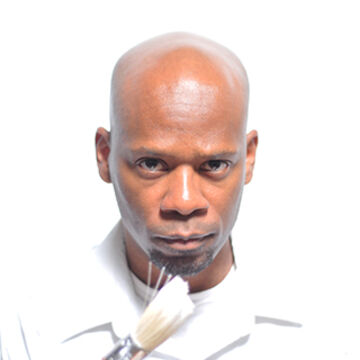

Jefferson Pinder
Professor
Contact
Bio
BA, 1993, University of Maryland; MFA, 2003, University of Maryland, College Park. Exhibitions: The Studio Museum, NY; The National Portrait Gallery, DC; Wadsworth Athenaeum Museum of Art, Hartford; Zacheta National Gallery, Warsaw; Showroom MAMA, Rotterdam. Publications: Art in American, Bling and Beyond. Collections: David C. Driskell; Henry Thaggart; High Museum of Art, Atlanta; USA State Department; Yale University Art Gallery. Awards: Headlands Center for The Arts; Creative Communities Initiative Grant; Vermont Studio Center Full Award Fellowship.
Jefferson Pinder’s work provokes commentary about race and struggle. Focusing primarily with neon, found objects, and video, Pinder investigates identity through the most dynamic circumstances and materials. From uncanny video portraits associated with popular music to durational work that puts the Black body in motion, his work examines physical conditioning that reveals an emotional response. His work has been featured in numerous group and solo shows including exhibitions at The Studio Museum in Harlem; the Wadsworth Athenaeum Museum of Art in Hartford, Connecticut; Showroom Mama in Rotterdam, Netherlands; The Phillips Collection; and the National Portrait Gallery in Washington, DC. Pinder’s work was featured in the 2016 Shanghai Biennale and at the Smithsonian Museum of African American History and Culture. In 2016, he was awarded a United States Artist’s Joyce Fellowship Award in the field of performance and was a 2017 John S. Guggenheim Fellowship recipient. Jefferson was a 2022 Smithsonian Artist Residency Fellow and a MacDowell fellowship recipient.